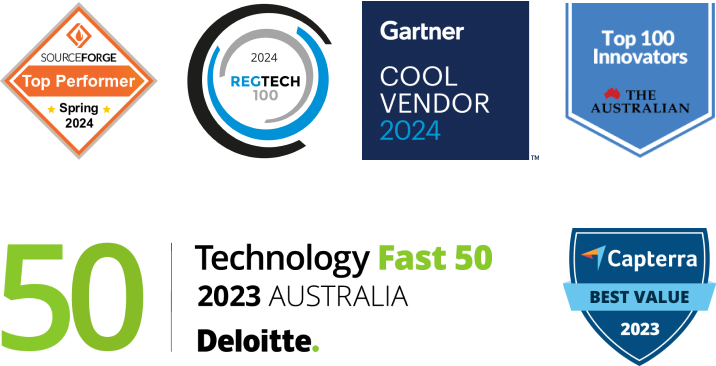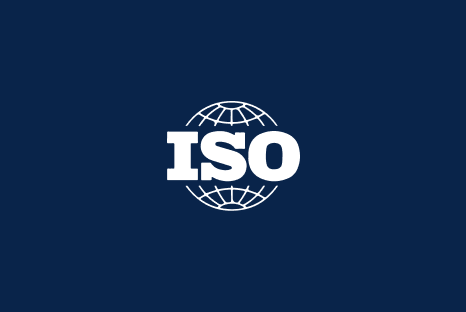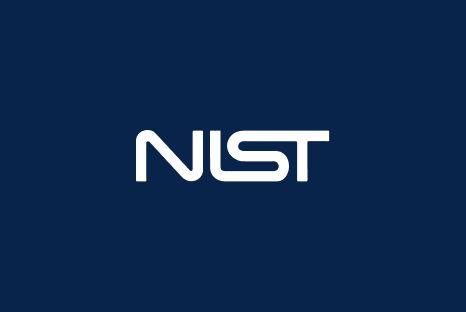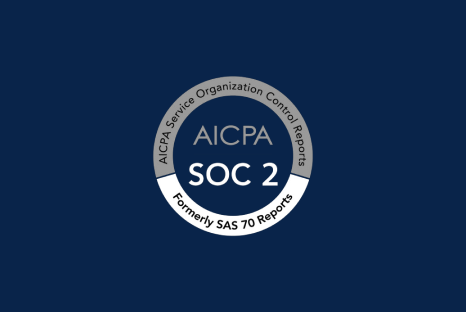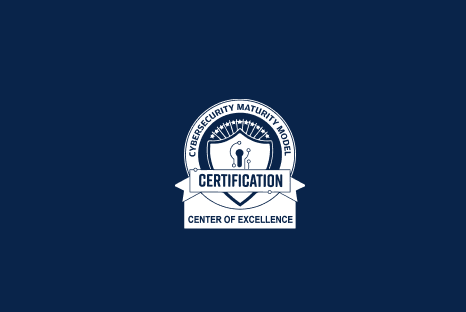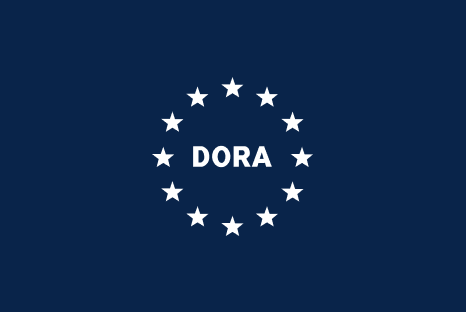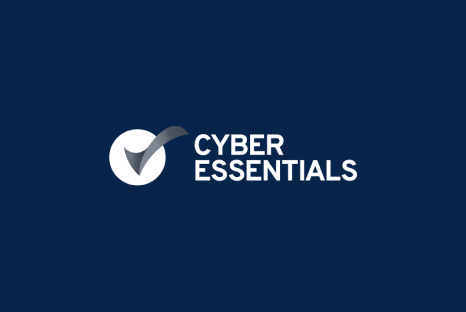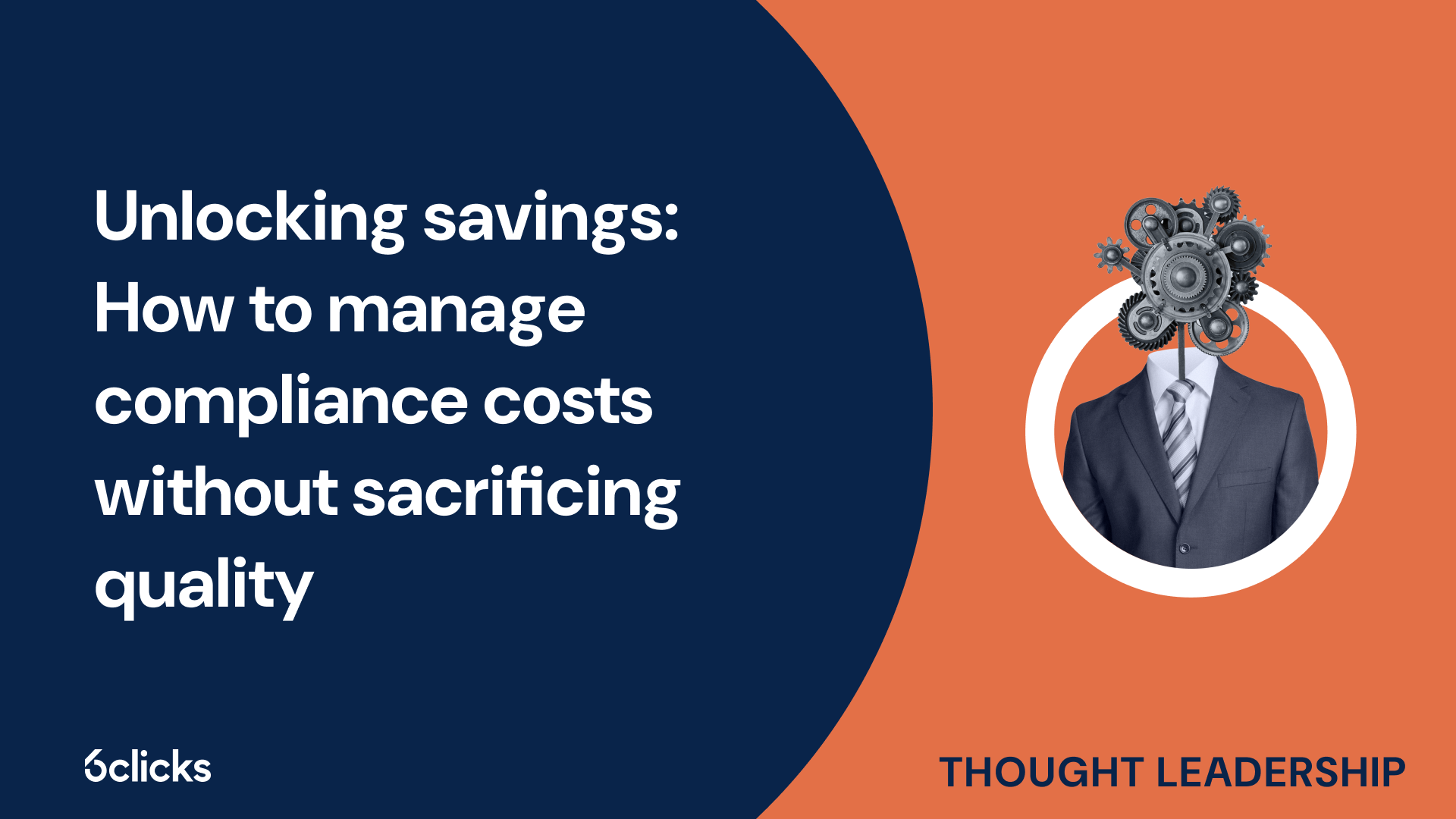What is TISAX?
Are you in the automotive industry and want to learn more about TISAX, become TISAX certified or maintain TISAX compliance? Explore our guide on everything TISAX.
Contents
Introduction to TISAX
TISAX (Trusted Information Security Assessment Exchange) is an essential standard for ensuring robust information security practices within the automotive industry supply chain. Developed by the German Association of the Automotive Industry (VDA), TISAX adapts the internationally recognized ISO/IEC 27001 standard to address the unique cybersecurity challenges that automotive suppliers and manufacturers face.
The need for TISAX
In today's interconnected automotive ecosystem, safeguarding sensitive data, such as intellectual property, design plans, and customer information, is paramount. A single data breach can have severe consequences, including financial losses, reputational damage, and legal implications. TISAX provides a standardized framework to mitigate these risks and foster trust among stakeholders in the global automotive supply chain.
What is TISAX?
TISAX is a set of requirements and assessment procedures tailored to the automotive industry. It originated from the common need to protect sensitive data and manage complex supply chain relationships involving numerous partners. The ENX Association, established by the VDA, administers the TISAX protocol, ensuring it remains up-to-date with the latest security practices and technologies.
TISAX assessment process
- Assessment scope: The scope of the TISAX assessment is defined during the registration process. Companies specify which parts of their business will be evaluated, considering the sensitivity of the information handled, potential risks, and the level of integration with automotive manufacturers (see below for more information).
- Assessment objectives:
- Standardize information security assessments across the automotive industry supply chain.
- Enhance overall protection against cybersecurity threats targeting sensitive data.
- Support the integrity and trustworthiness of the automotive supply chain.
- Streamline the assessment process, reducing redundant audits and fostering efficient collaboration.
- Importance of ISMS and relation to ISO 27001: TISAX requires the implementation of an Information Security Management System (ISMS) based on the ISO/IEC 27001 standard. The ISMS provides a systematic approach to managing information security risks, ensuring that policies, processes, and controls are continuously monitored, reviewed, and improved.
- Initial assessment: The initial TISAX assessment is conducted at one of three levels, depending on the sensitivity of the information handled:
- Level 1: Self-Assessment (for companies handling less sensitive data)
- Level 2: Document Review and Remote Audit (for moderately sensitive information)
- Level 3: On-Site Audit (for highly sensitive or classified information)
- Corrective action plan: If the assessment identifies areas of non-compliance, the company must develop and implement a corrective action plan to address the identified vulnerabilities and implement the necessary security measures. This plan is crucial for achieving and maintaining TISAX compliance.
TISAX compliance requirements
TISAX compliance is based on the VDA Information Security Assessment (ISA) catalogue, which outlines the necessary security measures and controls. Key requirements include:
- Information security management: Establishing and maintaining a comprehensive management system to oversee all aspects of information security, including policy development, risk management, and continuous improvement.
- Access control: Implementing strict controls and protocols to ensure that only authorized personnel can access sensitive automotive data, based on the principles of least privilege and need-to-know.
- Data protection: Safeguarding personal and operational data against unauthorized access, theft, or leakage, with a particular focus on protecting vehicle user data and proprietary automotive technology.
- Third-party management: Ensuring that all third parties involved in the supply chain, such as suppliers, contractors, and service providers, adhere to the same security standards when handling or accessing sensitive information.
- Incident management: Developing and implementing clear and effective processes for detecting, responding to, and mitigating information security incidents, minimizing their impact and preventing future occurrences.
Planning for TISAX compliance
Achieving TISAX compliance requires strategic planning and a comprehensive approach to align security practices with the standard's requirements. Key planning activities include:
- Risk assessment: Conduct a comprehensive risk assessment to identify potential vulnerabilities within the organization's information security systems, focusing on areas critical to the automotive industry.
- Resource allocation: Determine and allocate the necessary resources, including budget, personnel, and technology, to support the TISAX compliance efforts effectively.
- Timeline development: Establish a realistic timeline for achieving compliance, with clearly defined milestones such as completion of initial risk assessments, policy development, employee training, and the final assessment.
- Stakeholder engagement: Engage with all relevant stakeholders, including IT, legal, compliance, and executive teams, to gain their support, involvement, and alignment throughout the compliance process.
- Compliance framework Setup: Based on the risk assessment and TISAX requirements, develop a compliance framework that outlines the policies, controls, and procedures necessary for meeting the standard's criteria.
Implementing TISAX compliance
Successful implementation of TISAX compliance involves a systematic approach and ongoing efforts to integrate security measures into the organization's operations. Key implementation steps include:
- Develop detailed security policies: Create specific security policies that address each requirement of the TISAX standard, ensuring clarity and accessibility for all relevant personnel.
- Systematic deployment of security measures: Roll out comprehensive security measures designed to protect both physical and digital assets, such as securing network infrastructures, implementing strong data encryption protocols, and ensuring physical security at all locations.
- Comprehensive training programs: Conduct thorough training sessions for all employees, focusing on the importance of information security, the specific practices required by TISAX, and their individual responsibilities within these frameworks.
- Regular monitoring and review: Establish a routine for regularly monitoring compliance with TISAX standards, including periodic reviews and audits of security practices and the effectiveness of the implemented measures.
- Feedback and continuous improvement: Implement a feedback mechanism to gather insights from audits and reviews and use this feedback to drive continuous improvements to security policies and practices, ensuring they remain effective against evolving threats.
TISAX assessment objectives and assessment levels
TISAX offers 12 assessment objectives that companies can select from based on the specific information security requirements they need to meet. These assessment objectives serve as benchmarks for an organization's Information Security Management System (ISMS) and determine the applicable criteria catalogues from the VDA Information Security Assessment (ISA).
List of TISAX assessment objectives
| No. | Name | Description |
| 1 | Info high | Handling of information with high protection needs |
| 2 | Info very high | Handling of information with very high protection needs |
| 3 | Confidential | Handling of information with high protection needs in the context of confidentiality (access to confidential information) |
| 4 | Strictly confidential | Handling of information with very high protection needs in the context of confidentiality (access to strictly confidential information) |
| 5 | High availability | Handling of information with high protection needs in the context of availability (high availability of information) |
| 6 | Very high availability | Handling of information with very high protection needs in the context of availability (very high availability of information) |
| 7 | Proto parts | Protection of Prototype Parts and Components |
| 8 | Proto vehicles | Protection of Prototype Vehicles |
| 9 | Test vehicles | Handling of Test Vehicles |
| 10 | Proto events | Protection of Prototypes during Events and Film or Photo Shoots |
| 11 | Data | Data protection according to Article 28 ("Processor") of the European General Data Protection Regulation (GDPR) |
| 12 | Special data | Data protection according to Article 28 ("Processor") of the European General Data Protection Regulation (GDPR) with special categories of personal data as specified in Article 9 of the GDPR |
Note: The "Info high" and "Info very high" objectives can only be selected until March 31, 2024. From April 1, 2024, these will be replaced by "Confidential" and "Strictly confidential," respectively.
Selecting assessment objectives
Companies should select assessment objectives based on their specific information security requirements and the sensitivity of the information they handle. If partners provide precise requirements, companies should follow those guidelines. However, if no specific requirements are provided, companies should consider factors such as the potential impact of unauthorized disclosure, the availability needs of their products or services, and their involvement in handling prototypes or test vehicles.
It is recommended to consult with partners before initiating the TISAX assessment process if there are no precise requirements provided.
Assessment objectives and assessment levels
Each TISAX assessment objective maps to a specific assessment level (AL), which determines the rigor and depth of the assessment process. There are three assessment levels:
- Assessment Level 1 (AL 1): Self-assessment, primarily for internal purposes.
- Assessment Level 2 (AL 2): Document review, remote audit, and plausibility check of the self-assessment.
- Assessment Level 3 (AL 3): Comprehensive verification, including on-site audits, interviews, and thorough examination of evidence.
The higher the assessment level, the more rigorous the assessment process becomes, providing a higher level of assurance and trust in the company's information security practices.
| No. | TISAX assessment objective | Assessment Level (AL) |
| 1 | Info high | AL 2 |
| 2 | Info very high | AL 3 |
| 3 | Confidential | AL 2 |
| 4 | Strictly confidential | AL 3 |
| 5 | High availability | AL 2 |
| 6 | Very high availability | AL 3 |
| 7 | Proto parts | AL 3 |
| 8 | Proto vehicles | AL 3 |
| 9 | Test vehicles | AL 3 |
| 10 | Proto events | AL 3 |
| 11 | Data | AL 2 |
| 12 | Special data | AL 3 |
It is recommended to select assessment objectives that imply an assessment level 3 (AL 3) if there are no specific requirements from partners. This approach ensures that companies are prepared for future requests and do not have to undergo multiple assessments at different levels.
Assessment objectives and suppliers
TISAX does not necessarily require companies to subject their own suppliers to the same assessment objectives or levels. However, organizations must still assess the risks associated with their suppliers and determine if they need to meet specific TISAX requirements based on the nature of the information or services they provide.
By understanding the TISAX assessment objectives and their corresponding assessment levels, companies can ensure that they select the appropriate benchmark for their ISMS and undergo the necessary assessment process to demonstrate compliance with the required security standards within the automotive industry supply chain.
The TISAX exchange
One of the core components of TISAX is the secure platform managed by the ENX Association, which facilitates the exchange of assessment results among trusted partners within the automotive industry. This exchange mechanism streamlines the compliance process and minimizes redundant assessments, fostering efficient collaboration across the supply chain.
How the TISAX exchange works
- Central repository: The TISAX exchange acts as a central repository for storing and sharing assessment results. Participating companies can upload their TISAX assessment reports to the platform, making them accessible to authorized partners.
- Partner access: Automotive manufacturers and suppliers can access the exchange platform to retrieve assessment reports from their partners, suppliers, or service providers. This access is strictly controlled and limited to authorized personnel within each organization.
- Validity period: TISAX assessment reports have a defined validity period, typically ranging from 12 to 36 months, depending on the assessment level and the company's risk profile. After this period, companies must undergo a new assessment to maintain their compliance status.
- Assessment sharing: By sharing TISAX assessment reports through the exchange platform, companies can avoid redundant assessments from multiple partners, reducing the administrative burden and costs associated with repeated audits.
- Trust and rransparency: The TISAX exchange promotes trust and transparency among participants by providing a secure and centralized platform for sharing assessment results. This transparency enables partners to verify each other's compliance status and make informed decisions regarding data sharing and collaboration.
Benefits of the TISAX exchange
- Streamlined assessments: Sharing assessment results through the exchange eliminates the need for companies to undergo multiple, redundant assessments from different partners, saving time and resources.
- Enhanced collaboration: The exchange facilitates secure and efficient collaboration among automotive manufacturers, suppliers, and service providers by enabling the sharing of compliance information within a trusted network.
- Reduced costs: By avoiding redundant assessments, companies can significantly reduce the costs associated with undergoing multiple audits and maintaining compliance with various partners.
- Increased trust: The transparency and standardization provided by the TISAX exchange foster trust among participants, as they can verify their partners' compliance status and security posture.
- Scalability: The exchange platform is designed to support the growing number of participants in the automotive supply chain, ensuring scalability and efficient information sharing as the industry evolves.
Participation in the TISAX exchange
To participate in the TISAX exchange, companies must first achieve TISAX compliance by undergoing the appropriate assessment level based on their risk profile and the sensitivity of the information they handle. Upon successful assessment, they can register with the ENX Association and gain access to the exchange platform.
By leveraging the TISAX exchange, automotive suppliers can streamline their compliance efforts, enhance collaboration with trusted partners, and contribute to the overall security and integrity of the global automotive supply chain.
Benefits of TISAX compliance
Achieving TISAX compliance offers numerous benefits for automotive suppliers, enhancing their operational, strategic, and competitive standing within the industry. Key advantages include:
- Enhanced data security: Implementing the stringent security controls required by TISAX ensures that all forms of sensitive information, from personal data to intellectual property, are protected against unauthorized access and cyber threats, preventing costly data breaches.
- Improved business opportunities: TISAX compliance is often a prerequisite for doing business with major automotive manufacturers, especially in Europe. By meeting these standards, suppliers can expand their business opportunities and become eligible to participate in projects that require certified levels of data protection.
- Streamlined audits: With TISAX, suppliers undergo a standardized assessment process, reducing the frequency and complexity of audits from multiple manufacturers. This standardization minimizes the administrative burden associated with multiple, disparate security assessments.
- Trust and reputation: Compliance with TISAX enhances a company's reputation within the automotive industry, signaling a commitment to high standards of information security and instilling greater confidence among partners, clients, and stakeholders.
- Regulatory alignment: TISAX compliance helps organizations align with broader data protection regulations, such as the General Data Protection Regulation (GDPR), ensuring they meet both industry-specific and international legal requirements regarding data protection and privacy.
- Cost efficiency: Implementing TISAX can lead to cost savings over time by preempting security breaches that could result in significant financial losses. Additionally, the efficiencies gained from streamlined audit processes and enhanced data management practices can reduce operational costs.
Power your TISAX certification program with 6clicks

Go beyond tick-box risk and compliance for cyber with AI-powered solutions that engage the entire business
Anthony Stevens, CEO of 6clicks, discusses the company's mission and market differentiation.

Security compliance
Centralize and streamline multi-framework compliance from inception to audit.
-1.png)
IT risk management
Intelligently manage your risk profile to make better decisions while keeping your company safe.
Vendor management
Confidently engage vendors in line with their criticality and rapidly identify and treat vendor non-compliance.

Incident management
Capture, respond and learn from incidents and breaches while ensuring minimal disruption to business operations.
Discover how Hub & Spoke helps automotive suppliers balance control and autonomy for cyber GRC programs across sites and business units
Thought leadership
Fresh new thinking
Keep up to date with what's new and thought leadership in relation to all things 6clicks.

Canada's cybersecurity surge: GRC readiness for 2025
Canada’s cyber threat landscape is intensifying, with state-sponsored actors, ransomware, and AI-driven attacks putting critical infrastructure and...
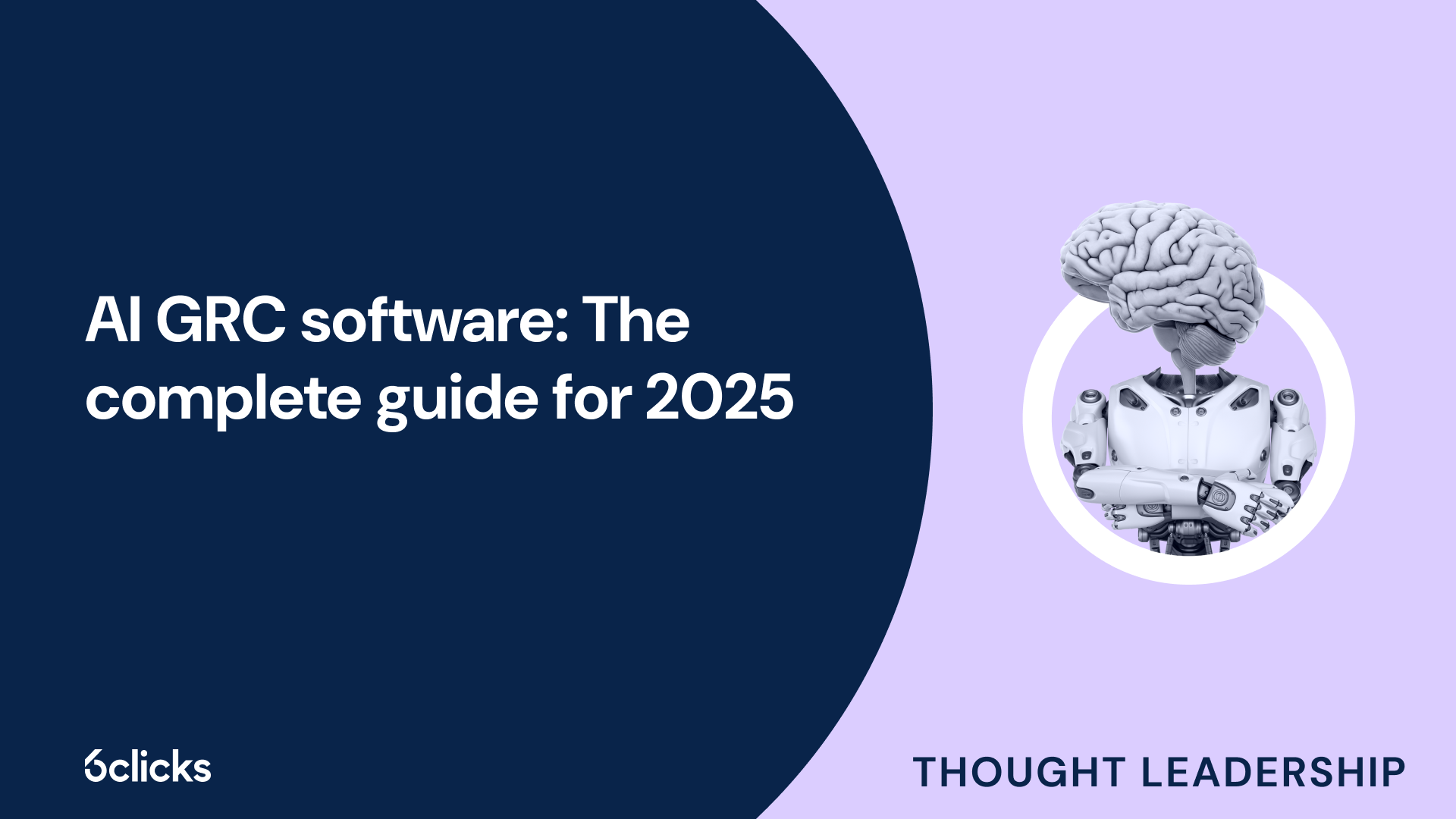
AI GRC software: The complete guide for 2025
Governance, risk, and compliance (GRC) has reached a breaking point. Organizations are drowning in complex regulations, rising cyber threats, and...

The future of GRC is federated + AI: Here's why
Today, governance, risk, and compliance (GRC) has never been more complex, especially for global enterprises and managed service providers juggling...

UK enterprise GRC: Humanising workforce engagement
UK enterprises face a critical disconnect between their governance, risk, and compliance (GRC) training investments and actual workforce engagement...
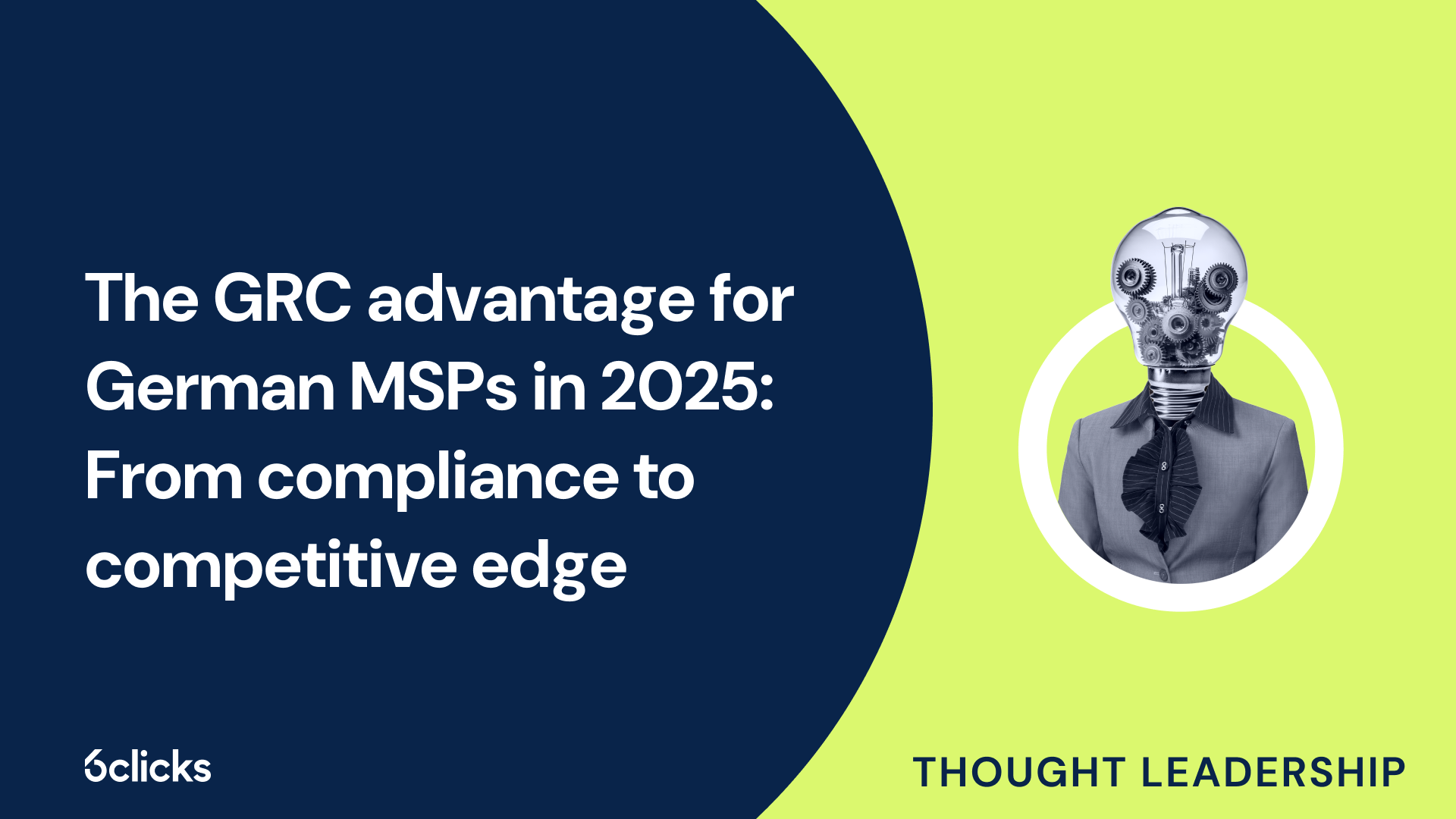
The GRC advantage for German MSPs in 2025: From compliance to competitive edge
Germany operates under one of Europe's most sophisticated regulatory frameworks, with the German IT Security Act 2.0 and the recently implemented NIS...
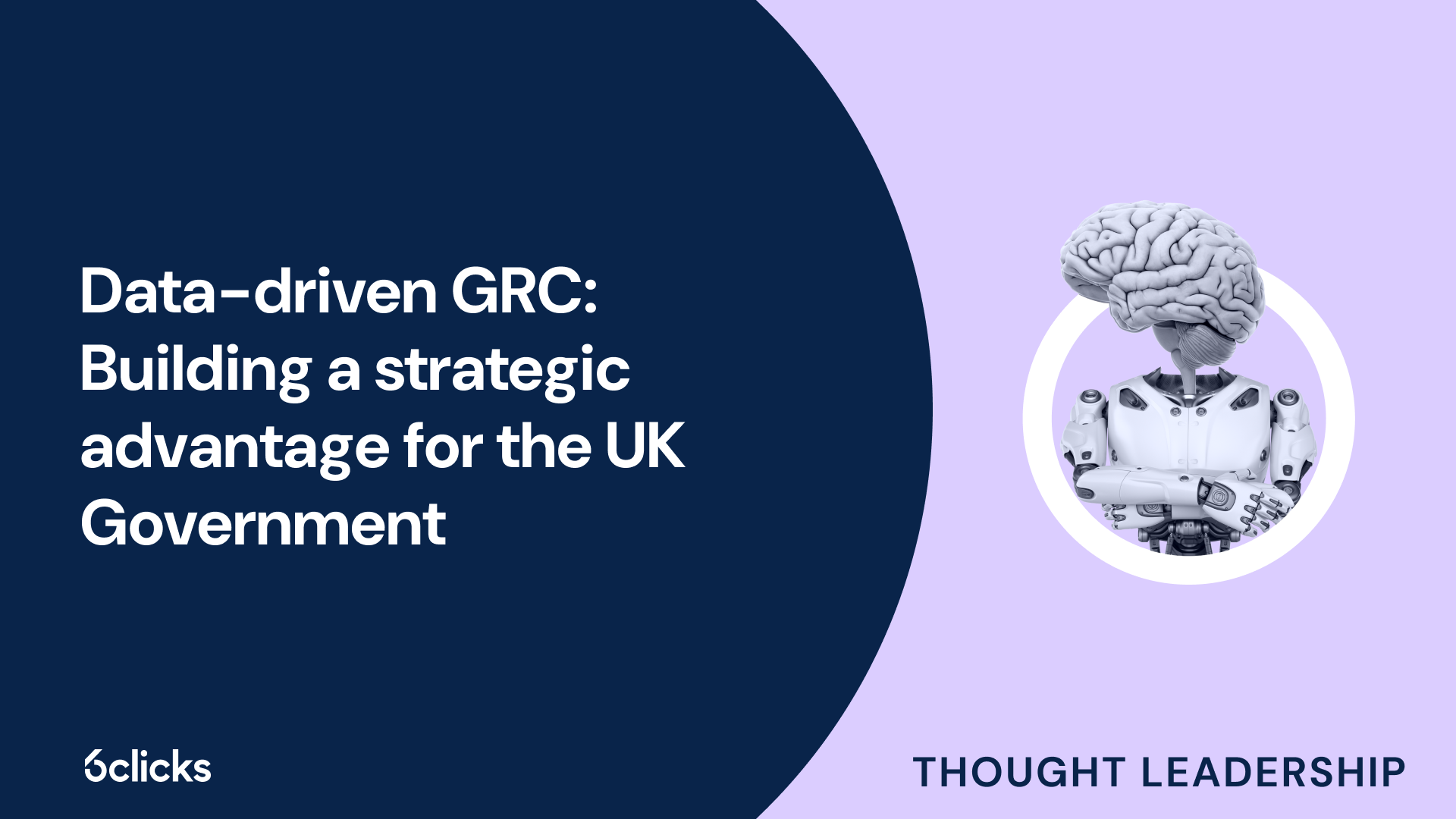
Data-driven GRC: Building a strategic advantage for the UK Government
Traditional governance, risk, and compliance (GRC) frameworks in the UK government have operated as siloed, reactive functions—addressing issues...
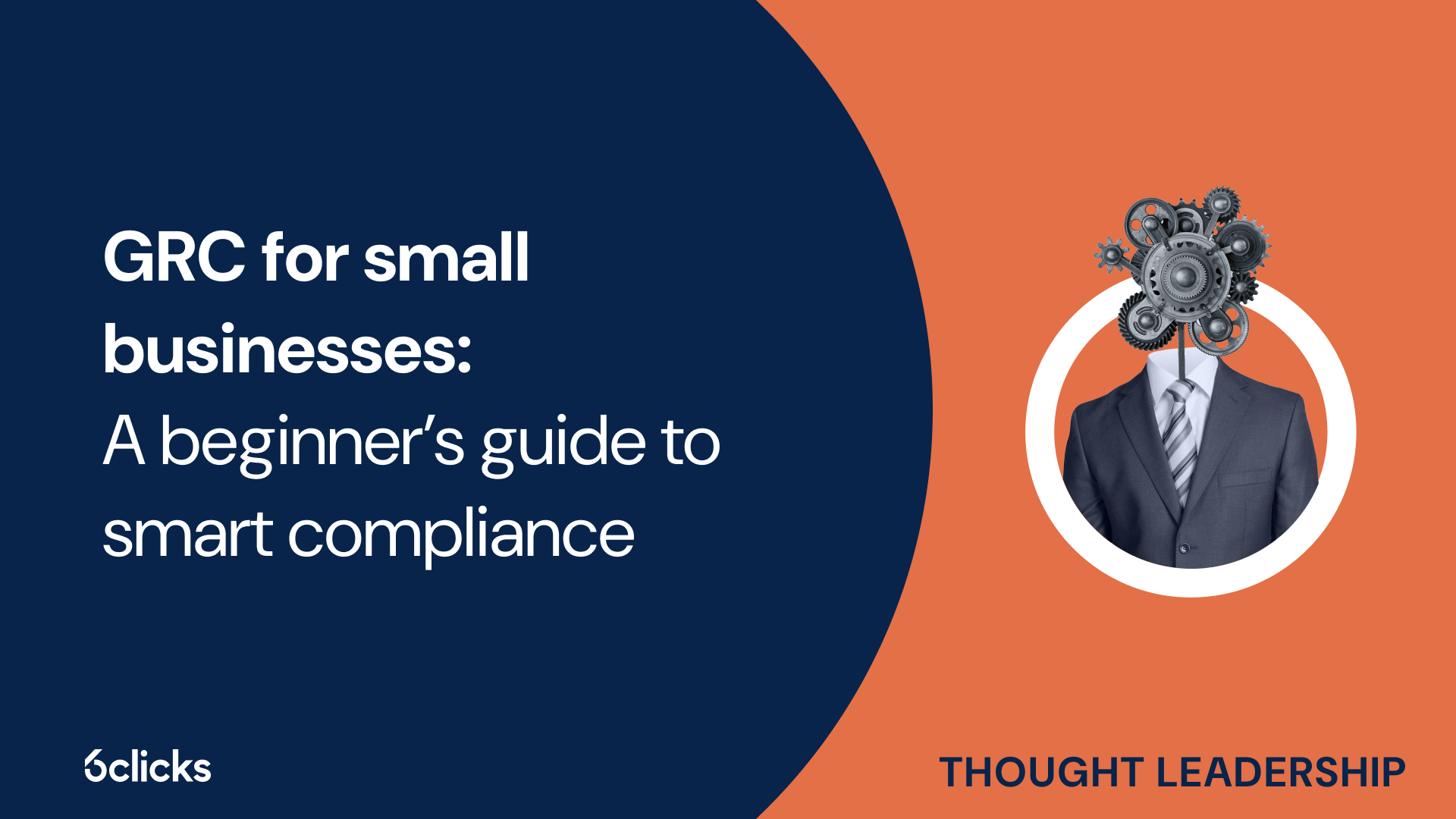
GRC for small businesses: A beginner’s guide to smart compliance
When it comes to governance, risk, and compliance (GRC), many small businesses assume it’s only a concern for large enterprises with sprawling...
Intelligently accelerate your cyber risk and compliance program today
Stop wasting time with complicated pricing, longwinded consulting efforts and outdated technology.
